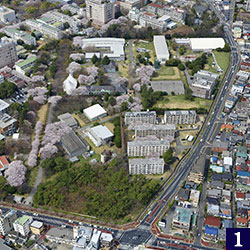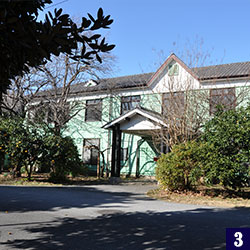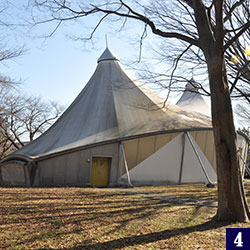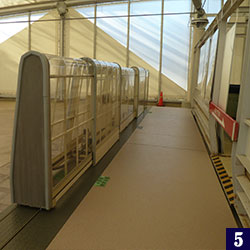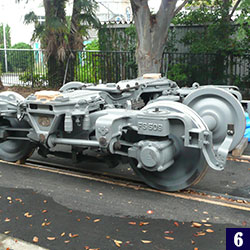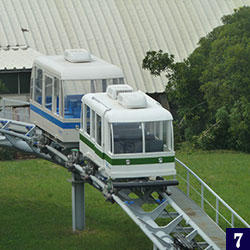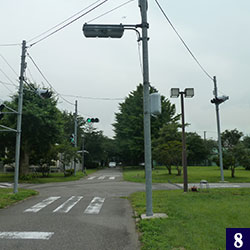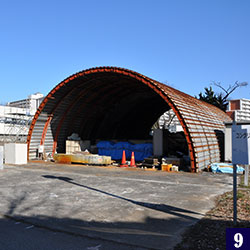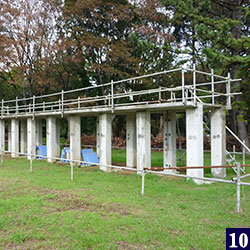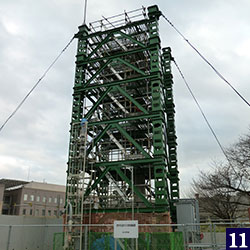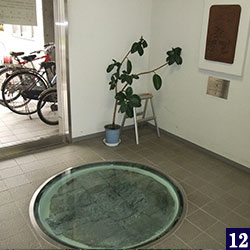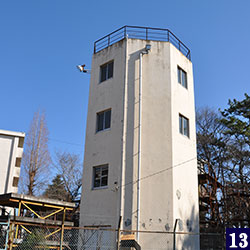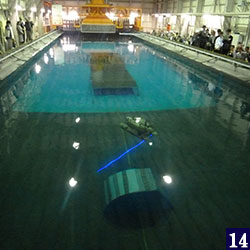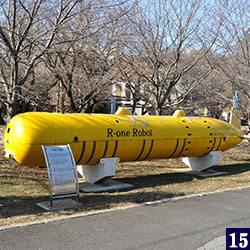Campus Walk
Campus Walk
From the Ocean Depths to Outer Space, and from Energy to Disaster Prevention: an Enormous Experimental Theme Park and the Birthplace of the Institute of Industrial Science
The Institute of Industrial Science's Chiba Experiment Station is situated in front of Nishi-Chiba Station of the JR Sobu Line. Why does the University of Tokyo have research facilities in Chiba Prefecture? Well, as a matter of fact, this site was the location of the Second Faculty of Engineering (see note), which existed from 1942 to 1951, and University facilities have remained here ever since. The Institute of Industrial Science (IIS) was established in 1949 under the Second Faculty of Engineering, making Nishi-Chiba its birthplace. The IIS itself was relocated to Roppongi in 1962 and later to the Komaba Research Campus (also known as the Komaba II Campus), where it currently operates. Its original location, meanwhile, was repurposed as the Chiba Experiment Station, which is utilized as a valuable space for large-scale experiments that cannot be carried out in central Tokyo.
Just as the Second Faculty of Engineering produced many industry heavyweights who fueled Japan's postwar reconstruction, the IIS' Chiba Experiment Station has collaborated with the industrial sector to carry out many projects using their large test facilities, contributing the results of their research to Japanese society. These collaborations have continued from the dawn of Japan's post-WWII industrial revival and the high-growth period of the Japanese economy through to the present. The Chiba Experiment Station is home to dynamic research activities, thanks to a steering committee that permits young researchers free access to facilities and its function as site of interdisciplinary research experiments. With an area of approximately 9.3 hectares, the Chiba Experiment Station makes full use of its spacious site (Picture 1). Keeping in mind the Chiba Experiment Station's background and history, let's walk around the site and look at its current facilities.
After entering through the Main Gate, we stroll along the lane lined with cherry trees (Picture 2), a famous spot for cherry blossom viewing in April, and head towards the Administration Office, which sits near the center of the site. This wooden building was constructed in 1941 as a facility for the Second Faculty of Engineering (Picture 3). What is remarkable about this structure is that it is one of the few wooden buildings still in active use among national universities across Japan today, and is thus extremely valuable. Even presentation meetings regarding the most modern and innovative research are often held in the conference room of this wooden building.
Next to the Administration Office, we can see an unusual dome-shaped building, an experimental structure called the White Rhino. Constructed as a model of the tensegrity system, White Rhino is the first structure of its kind in the world (Picture 4). This building's unique shape is easy to spot by airplanes flying overhead, and has even attracted the attention of journalists, receiving media coverage. Inside this building are full-scale prototypes of a railway car and a train platform, with which research is conducted to examine passenger flows and behavior. For instance, a proposal made here concerning a new way of arranging train seating is presently being put to use in commuter trains on the Tokyu Ikegami Line. Also, a large number of experimental evaluations have been carried out in this structure using platform gate prototypes called "Dokodemo Saku (free access platform gates; Picture 5),"which can automatically adjust to suit different types of train cars, such as 3-door and 4-door models. These gates were tested at Shin-Tokorozawa Station on the Seibu Shinjuku Line. Moreover, the Chiba Experiment Station features an actual railroad track and bogie (truck) (Picture 6), which are used for tests such as experiments on derailment warning systems. Another highlight of the Station is a test track for a new energy-saving form of transportation called Eco-Ride, which is driverless and features technology used in roller coasters (Picture 7). Also, traffic lights have been installed for research purposes at an intersection within the site. With these traffic lights, automobile driving tests that would be impossible to carry out on public roads are able to be conducted (Picture 8). In these diverse ways, the entire Chiba Experiment Station functions as a testing ground for transportation system research.
We still haven't even scratched the surface of the experimental facilities here. Other infrastructure includes full-scale models of a tunnel (Picture 9) and a bridge (Picture 10). Another technology in development at the Station is self-healing concrete, an advanced concrete that naturally repairs any cracks that form within it. This concrete is currently being field tested. A tall tower conspicuously overlooks these large-scale experimental facilities. Housed in that structure is an advanced coal gasifier, with which demonstration experiments are carried out into next-generation energy technologies (Picture 11). Next to the tower sits the Research and Testing Complex that was completed in 1995. Inside this building are a large number of research facilities, including experimenting equipment concerning biomass and manufacturing technologies, such as plastic molding. The Research and Testing Complex is raised on pillars above a first floor that houses a commemorative relief of the test furnace that was originally located here; the bricks that once lined the furnace bottom have been preserved and are also on display (Picture 12). Currently, a silicon furnace is being used instead of an iron one.
For research on earthquake-resistant structures, the Chiba Experiment Station is also equipped with a large shaking table and other earthquake experimentation facilities. One facility that particularly stands out among this group is the Response Observation Tower (Picture 13). Additionally, a seismometer has been placed in the Earthquake Ground Motion and Strain Measurement System for 24-hour monitoring. Our last place to visit is the IIS Ocean Engineering Basin (Picture 14). This basin, which was completed in 2002, is five meters in depth, 50 meters in length and ten meters in width. Sea surface changes due to waves, currents and winds can be artificially produced here. The basin is being used for research in areas such as ocean space utilization and marine resource development. Autonomous underwater vehicles are also developed at this facility. For instance, the R-one Robot, a noteworthy underwater vehicle which was created at this basin, is displayed at the Station (Picture 15).
The Chiba Experiment Station, as a matter of fact, is also the birthplace of Japan's rockets, as the Pencil rocket was launched for one of the first times here. As a pioneer of a wide range of research, covering not only ground transportation but also the oceans and outer space, as well as energy issues and disaster prevention, the Chiba Experiment Station will continue to fulfill and expand upon its current functions.
1. Aerial photograph of the Chiba Experiment Station
2. Lane lined with cherry trees (view from the Main Gate), a perfect spot for cherry blossom viewing
3. The Administration Office, featuring offices and conference rooms
4. White Rhino, named due to its resemblance to a white rhinoceros
5. Dokodemo Saku, platform gates that can automatically adjust to train cars with any number of doors
6. Test equipment for light rail transit (LRT, next-generation trams)
7. Eco-Ride, an energy-saving, short-distance public transportation system
8. Traffic lights for the testing of the intelligent transportation system (ITS) installed at the Station
9. Full-scale model tunnel with a total length of 17.5 meters
10. Model of rigid frame bridge for monitoring concrete surface quality
11. Advanced coal gasifier test facility
12. Commemorative relief of the test furnace and bricks from the bottom of the furnace on display at the Research and Testing Complex
13. The Response Observation Tower, located near the Main Gate (you can see it on your right when entering the Main Gate)
14. IIS Ocean Engineering Basin with a length, width and depth of 50 meters, ten meters and five meters, respectively
15. R-one Robot, developed to operate for a long period of time underwater
Note: Although the Second Faculty of Engineering was essentially shut down in 1949, it coexisted with the IIS until the last of its students graduated.

Yoshihiro Suda
Director, Chiba Experiment Station, Institute of Industrial Science http://www.nozomi.iis.u-tokyo.ac.jp/index-e.html




